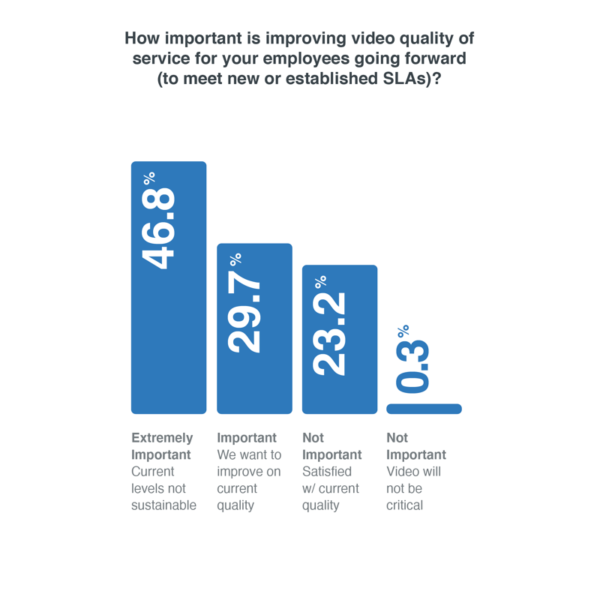Leading provider of UC analytics and monitoring, Vyopta, recently revealed the findings of a survey into the way companies are adapting to a new world of remote work. Vyopta surveyed the IT experts within hundreds of large enterprise companies to learn how they’re handling the change in their day-to-day routines and what their plans are for the future.
Since the COVID-19 pandemic began to gain traction worldwide, organisations and companies of all sizes have adapted as quickly as possible. Many businesses have had to move their entire workforce, or at least a large portion of it, away from the office.
The Vyopta survey, looks at the next phase for the remote work revolution, and how companies can manage UC workspaces in this new landscape.
Video Collaboration is Here to Stay
Vyopta’s study, conducted in July 2020, generated 327 responses from IT experts handling the complex and changing work environment in their business space. The majority of the respondents worked with or for organisations with more than 1,000 members of staff. Additionally, all people in the survey manage, oversee, or advise the company in matters oof UC, technology, and facilities planning.
The Vyopta team gathered some interesting insights from their survey, however, one of the biggest findings focused on the new demand for video conferencing, and how essential these meetings now are. According to Vyopta, 68% of the companies who responded to the survey plan to hold their future meetings over video tools either 100% of the time, or they plan on providing an option to join via video to their participants.
When asked how they use video on a daily basis, 22% of respondents said that it’s essential to offering a one-to-one service, while 34% said video is for team collaboration. Another 31% of respondents use video for external client, partner, or customer interactions. 13% of the respondents said they rely on video for a one-to-many broadcasting experience.
Preparing for the Changing Workplace
Video clearly has a significant part to play in the way that we’ll work in this new pandemic-affected environment. However, Vyopta found that not just any standard of video will do. Improving the quality of video services for employees going forward is a crucial consideration for 46.8% of respondents. Only around 23.2% of respondents said that they’re happy with the current quality of their video solutions. Just 0.3% thought that video “will not be critical”.
Perhaps one of the factors driving this demand for high-quality video is the staggered return to the office environment. Most companies agree that the return to the office will be a slow process, with a hybrid workforce that remains working partially from home. Around half of the largest enterprises that responded to the study said that they’re planning on reducing their spend on office space within the next 12 months.
However, to ensure that employees can continue to feel productive, and deliver the right results from home, quality will be a critical consideration. Right now, the temporary solutions that companies implemented to deal with the sudden onset of COVID-19 might not be enough. Many business leaders adopted new video meeting and collaboration solutions overnight, without the right amount of planning. Now, 27% of respondents from the largest enterprises in the study report issues with their video service quality. A further 73% said that they’re having problems with the quality of their voice services, since the pandemic began.
Creating a Landscape for the New Normal
We’re entering a time where companies are beginning to move on from the rapid and panicked response to COVID-19 that occurred at the start of the year. Business leaders are looking for more sustainable strategies that will support them long-term. The 80% of companies that relied on UCaaS to scale their remote workforce quickly will be searching for a way to maintain wins long-term.
The “Big 3” in this new work environment are Zoom, Cisco, and Microsoft, giving companies a range of options to choose from as they move forward. Microsoft was rated as the leading tool for video collaboration, followed by Cisco in second place, and Zoom in third.
Interestingly, Vyopta’s survey also reveals that companies may be keen to maintain an environment that supports multiple vendors. About 2 thirds of enterprises are using two or more collaboration vendors. Whether these companies continue on that path or not, the CEO of Vyopta, Alfredo Ramirez, said that high-quality collaborative experiences will be essential to the future of remote work, concluding:
“Remote work is here to stay”








